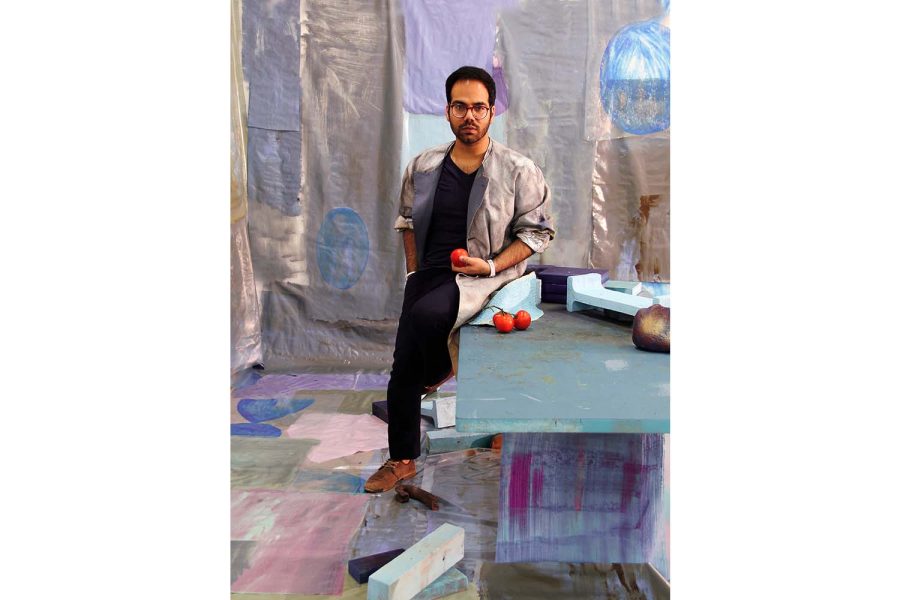Painting and drawing UI alum opens exhibition at National Indo-American Museum
Kuldeep Singh graduated from the University of Iowa with a MFA in painting and drawing in 2015, and continues to explore his identity with his new exhibition at the National Indo-American Museum in Chicago.
March 10, 2022
Half-nude male bodies, abstract painted designs, and carefully choreographed movements — Kuldeep Singh’s art would draw anybody’s eye.
Singh graduated from the University of Iowa in 2015, earning an MFA in both painting and drawing, and is now a visual artist and choreographer in New York City. His most recent exhibit is in the National Indo-American Museum, located in the Chicago suburb of Lombard, Illinois, and will be open until May 18.
Singh has presented shows at the UI and in Iowa City several times over the years, such as Structure is What I Speak of, an art installation at the UI, Noli Me Tangere, an immersive art and dance performance at the Levitt Gallery, and So Many Journeys, a dance performance at the Englert Theatre.
RELATED: Isaac Stauffer, UI alum and professional tap dancer, performs with the Chicago Tap Theatre
Singh first received a BFA in applied arts from Delhi University in 2007, on full scholarship. His education at Iowa began in 2012, after years of studying the classic Indian dance Odissi under the acclaimed choreographer Madhavi Mudgal.
“I remember my guru [Mudgal] at home. She would always tell me Odissi is nothing else but kinetic forms and sculpture happening in space time,” Singh said.
For his exhibition at the National Indo-American Museum, Singh emphasized that Odissi is what contributes to the sense of time in his show, despite his three paintings and the cinematic component present at the exhibition.
His exhibit mainly focuses on the male body and Queerness in ecology, but from a decolonial perspective.
“The element of time comes into it apart from the three dimensions, so dance gives that sensibility of an awareness of physical awareness, but simultaneously the best part of Odissi, its music and its storytelling, which is the wisdom of countless bygone generations,” Singh said.
He went on to explain that Odissi, despite its “fragmentations at the hands of history,” has largely stayed intact and remained a cultural point of pride for him. For that reason, it ties in with his theme of decolonization he often conveys through his art.
Other themes he often focuses on include that of ecology, and his identity as a gay man.
“When I was in India, it was still illegal, you know, and it was like I was very quiet and I’m still very quiet about it,” Singh said. “I have so many friends in New York, you know, who are loud, who we call effeminate. They have different expression, and I admire everything but personally when I speak, I am who I was in India.”
Singh went on to emphasize the impact of when he read the works of Michel Foucault, a French philosopher, and argues that “through Queerness, you can be spiritual.” He added that homosexual relationships also exist in the animal kingdom, and that they are completely natural and a result of evolution.
“It’s so ironic a country which gave Kamasutra to the world is the one which is questioning upon all this is taboo,” Singh said. “It’s not taboo, its nature, and I think that is something which I’m more interested in is that — how I can align my work with understanding Queerness from a larger perspective?”
Singh said he takes this, as well as his own body, into consideration when posing and positioning the models for his work, as well as when he is painting them. He said it is a great effort to put together work intended to make the audience consider homosexuality, ecology, and colonialism through a broader lens.
“I think that this, the awareness which I had when I was in India verses that which I have now over the years, you know, has opened further my mind,” Singh said. “As an LGBTQ person, I am the same as who I was back in India.”



